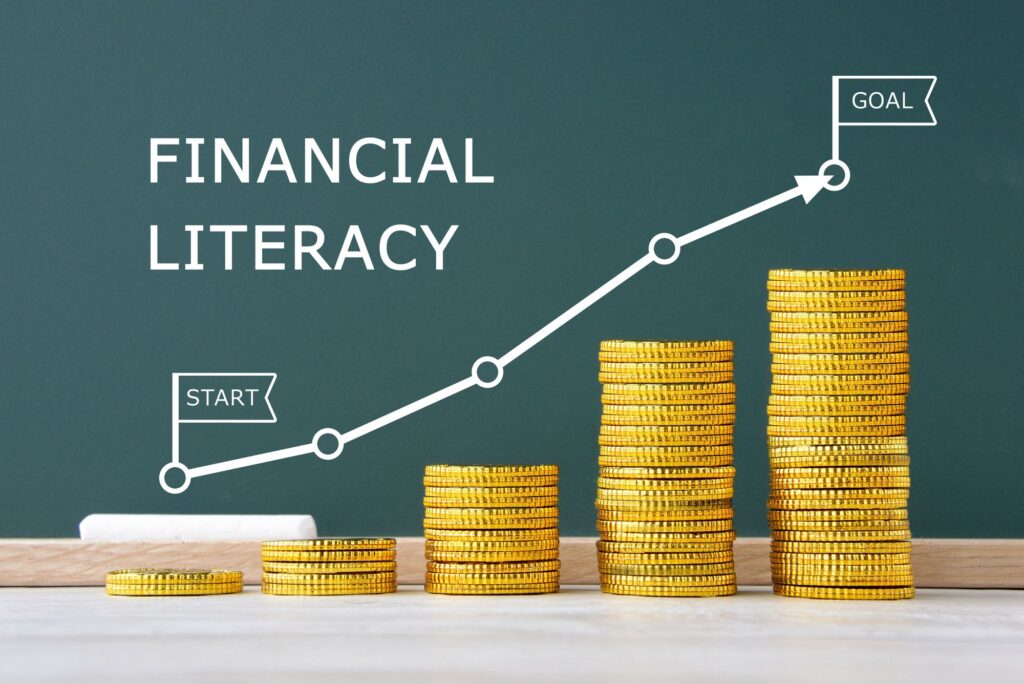Overview
People, predominantly young adults, always find themselves whining when they discover that only 50 cents are left laying in their bank account. Due to their poor financial decisions, like buying that new game console which now collects dust in the corner of their room, they do not have sufficient money for their essentials and needs to survive. In times like this, it is important for people to have financial literacy.
What is Financial Literacy?
Financial literacy is the ability to comprehend and make use of a variety of financial skills, including personal financial management, budgeting, and investing. It also means understanding certain financial principles and concepts, such as compound interest, managing debt, and financial planning.
Consequently, achieving financial literacy can help young adults save more money and become self-sufficient. Furthermore, teach them not to waste their savings on unnecessary things.
Where do we start?
Well, a few key points need to be taken note of to fully accomplish financial literacy. But for beginners, these three important key steps may help you start off your journey to achieving financial literacy.
- An Up-to-Date Budget
In a nutshell, a budget is basically just a spending plan. This means knowing where your money is going which can keep you conscious from spending money unnecessarily. Moreover, having a budget can help you set saving goals and put aside funds to reach said goals.
In light of this, creating a budget is actually easy; That is, if you have self control. There are a lot of online budgeting apps that can help you start off your budgeting process like Rocket Money, Honeydue, and Simplifi.
Once you have your budget set in stone, you can adjust it as needed as your income and expenses change.
- Dedicated Savings
Separating a portion of your income into a savings account is one of the most common ways to boost your financial security. However, it can be easy to become disheartened when expenses arise and entails you to use up your savings. This is why it’s effective to split your savings into two categories: savings to spend and saving for the future.
Saving to spend includes savings set aside for regular expenses such as new tires, unexpected medical expenses, groceries, and fuel for transportation.
Saving for the future includes planning for retirement or individual retirement account (IRA) or savings for other future investments. For example, wanting to save money for a down payment on a house or your future children’s school fees and necessities.
- ID Theft Prevention
Approximately, 15 million Americans experience identity theft each year, with an average loss of $23 billion lost to traditional identity fraud during 2022. One major element of financial literacy is being able to be cognizant and navigate yourself out of any scam attempts.
Conclusion
Evidently, financial literacy is important for everyone to have. Without financial literacy, you could never learn to get out of debt and worst of all, be crushed with all kinds of financial burdens that cannot be undone unless you have the correct knowledge to do so. As a saying goes, “Do not save what is left after spending, but spend what is left after saving”.
References
Silver, C. (2024, April 1). The Ultimate Guide to Financial Literacy for adults. Investopedia. https://www.investopedia.com/guide-to-financial-literacy-4800530
Choice Bank. (2021, March 24). Three key components of financial literacy – Choice bank. https://bankwithchoice.com/wealth-blog/three-key-components-of-financial-literacy/
Ianzito, C. (2024, April 10). Identity fraud cost Americans $43 billion in 2023. AARP. https://www.aarp.org/money/scams-fraud/info-2024/identity-fraud-report.html


